At a minimum, a bike computer will display your distance covered, total ride time and current speed. Some offer many more features, including GPS bike computers with turn-by-turn navigation and even personalized coaching. We’ve rounded up the best bike cycling computer for every type of rider.
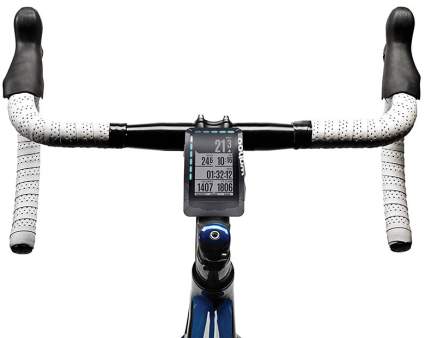
|
Amazon Customer Reviews
|
Price: $569.99 Shop at Amazon | Shop now Read our review |
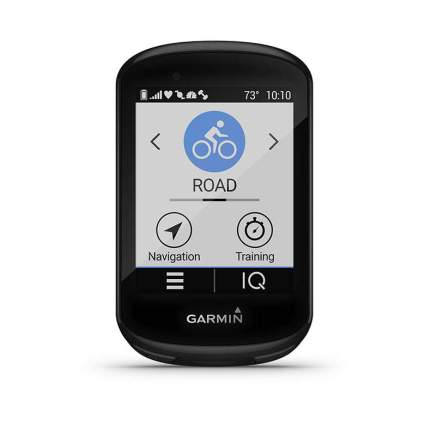
|
Amazon Customer Reviews
|
Price: $377.98 Shop at Amazon | Shop now Read our review |
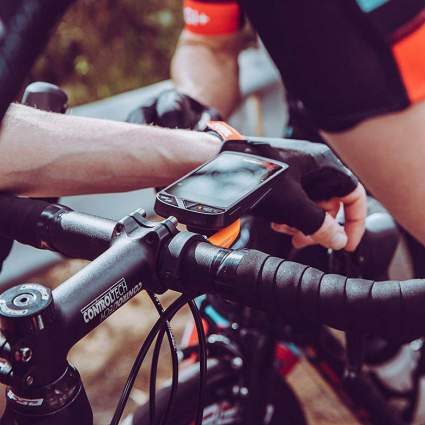
|
Amazon Customer Reviews
|
Price: $278.98 Shop at Amazon | Shop now Read our review |
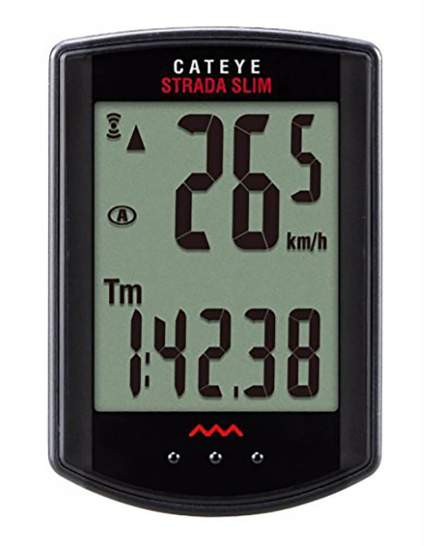
|
Amazon Customer Reviews
|
Price: $89.00 Shop at Amazon | Shop now Read our review |
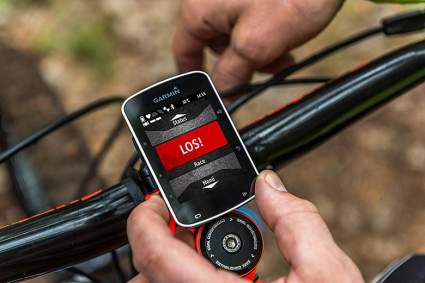
|
Amazon Customer Reviews
|
Price: $195.30 Shop at Amazon | Shop now Read our review |
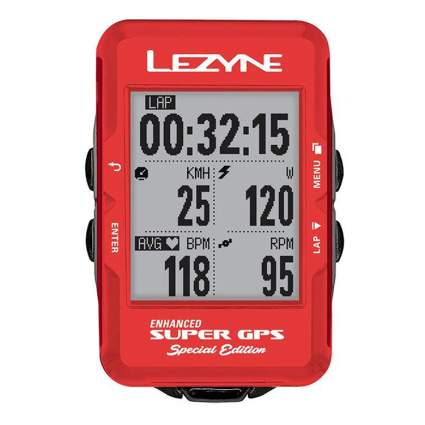
|
Amazon Customer Reviews
|
Price: $89.99 Shop at Amazon | Shop now Read our review |
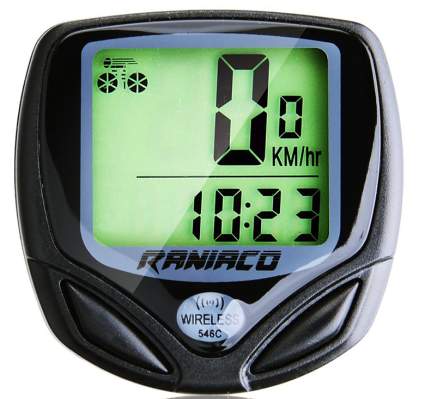
|
Amazon Customer Reviews
|
Price: $11.98 Shop at Amazon | Shop now Read our review |
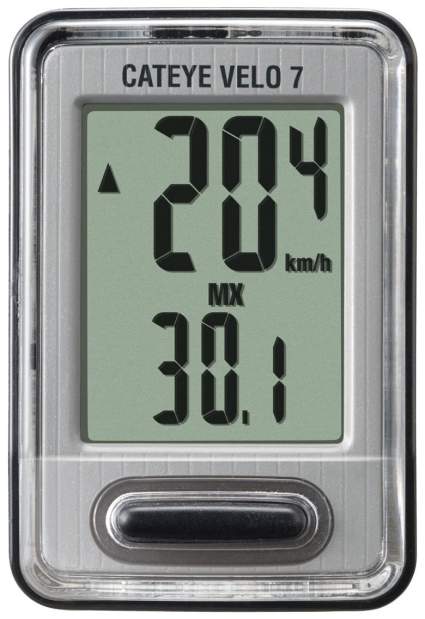
|
Amazon Customer Reviews
|
Price: $26.95 Shop at Amazon | Shop now Read our review |
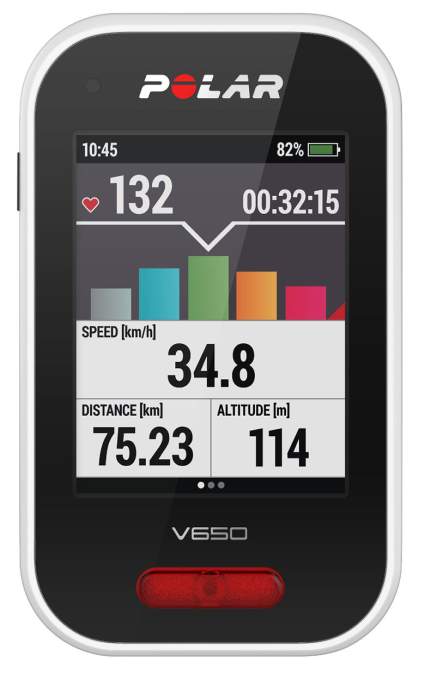
|
Amazon Customer Reviews
|
Price: $273.20 Shop at Amazon | Shop now Read our review |
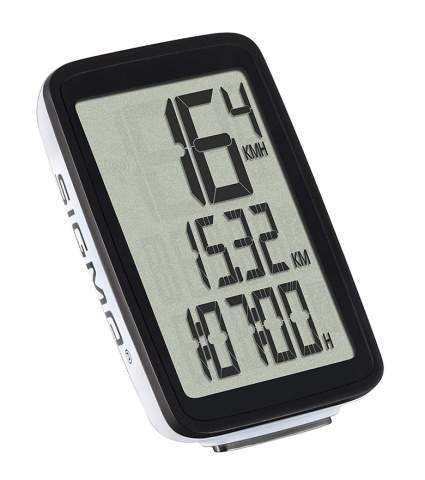
|
Amazon Customer Reviews
|
Price: $34.99 Shop at Amazon | Shop now Read our review |
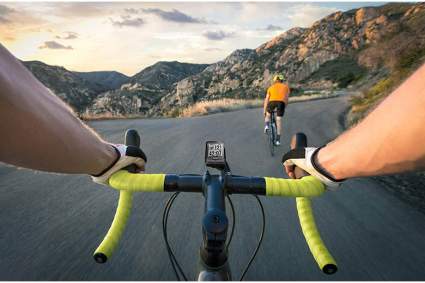
|
Amazon Customer Reviews
|
Price: $98.00 Shop at Amazon | Shop now Read our review |
-
1. Wahoo ELEMNT
Pros:- Turn-by-turn notifications
- Push the side buttons to access detailed information
- Route generation
Cons:- Not a touch screen
- Relies heavily on a smartphone to use all features
- Screen resolution could be better
If simplicity is what you desire in a bike computer, consider the Wahoo ELEMNT. This bike computer is quickly and easily set up via the accompanying app, so there’s no need to scroll through cumbersome menus.
Once the computer is set up, you can use the app to further customize settings, configure workout pages, connect with your favorite cycling apps and more.
Cyclists who prefer to stay in tune with their data particularly appreciate the vibrant LED indicators, which provide instant feedback with a quick glance.
When you’re looking to dig into your stats a bit more, simply press the side buttons to scroll through and view various data fields. And when your ride is nearing to an end and you want to end on a high note with a delicious meal, just type your destination into the app and the computer will generate a route to take you there. Turn-by-turn notifications help you stay on track regardless of where you’re riding.
A live tracking portal allows friends, family members and fans to monitor your progress on a ride. You can also share your location with fellow riders so that no one gets lost when meeting up with a group.
-
2. Garmin Edge 830
Pros:- Advanced performance metrics tracking
- Comes with many cycling safety features
- Decent battery life
Cons:- Pricey
- A bit heavy
- Not the most compact design
For performance-oriented riders, the Garmin Edge 830 offers everything from dynamic performance monitoring to a routable map and a touchscreen display.
If you like to track your peformance when you ride, this Garmin GPS bike computer could be the right one for you. Dynamic performance monitoring tracks just about everything you need, from VO2 max to recovery, acclimation to heat and altitude, hydration, nutrition and more.
You can explore new routes with confidence via the routable Garmin Cycle Map with popularity routing. You can create new routes as you go or have the computer recalculate if you find yourself drifting off course. Turn-by-turn instructions provide crystal clear navigation, even on new routes. Route calculation times are nearly double those of previous Garmin models.
This computer works equally well on and off ride. Mountain bike riders can track distance and jump count along with hang time, Grit and Flow.
Whether you’re on a road or mountain bike, climbing can be tough. A built-in climbing feature lets you know the remaining grade and ascent during climbs on various routes and courses. Not only does this allow you to better gauge your remaining effort, it helps you power through the climb if you’re on a new route.
Whether your preferred riding style is on the road or trails you can take advantage of the numerous safety features. The computer includes group messaging and tracking, along with a bike alarm.
In terms of battery life, you can expect up to 20 hours with the GPS.
-
3. XPLOVA X5 Evo
Pros:- Full color screen
- Supports many ANT+ compatible devices
- Built-in HD action camera
Cons:- Camera is only 720p
- Not the lightest computer
- World map could be improved
Imagine being able to capture the best moments without needing to carry or mount an action camera. Enter the XPLOVA X5 Evo, a bike computer with an integrated camera.
You understandably want to capture your most memorable biking adventures. This cycle computer captures via loop recording, time lapse and data-linked auto recording. Manual recording is another option. Once the video is recorded you can share it with friends and family via social media. The 120 degree wide-angle camera captures HD video content on the go. There’s 16GB RAM and 8G flash for storage.
While this bike computer excels at recording video, it works just as well as a general all-purpose bike computer. For example, it has a three-inch touchscreen display with an ambient light sensor. The display is full color. An IPX7 rating means the computer can withstand rides in inclement weather conditions.
It’s hard to get lost with this GPS-enabled bike computer, as it includes a free global map. You can add in ride essentials such as hill climbs and food stops for a more personalized trip.
This bike computer features ANT+ support and can be paired with your favorite heart rate monitor, combination speed and cadence sensor, power meter and other tools.
The battery lasts roughly 12 hours. A micro USB charging cable is included.
-
4. CAT EYE Strada Slim
Pros:- Can be easily switched between two bikes
- Odometer can be manually reset
- Highly customizable display
Cons:- No GPS
- Doesn't have WiFi
- Changing wheel size can be tricky
As long as you can forego GPS connectivity, this wireless computer is a practical choice for any cyclist.
Strada Slim displays all the basics and more. You’ll be able to see your total distance, elapsed time, current pace and more. The three speeds displayed are maximum, current and average. Other features include two trip distances and a clock.
Staying true to its name, the Strada Slim does indeed have a slender profile. It’s thinner and lighter than the Strada Wireless computer yet has a larger screen.
A dual tire size function allows you to use the computer on two different bikes. You can also reset the odometer yourself to avoid losing crucial information.
While the universal model sensor is compatible with any bike, the slendor sensor is specifically designed for road bikes. This computer is available in several different colors.
The battery will last up to a year, assuming the computer is used for approximately an hour per day.
Find more Best Entry-Level Wireless Computer: CAT EYE Strada Slim information and reviews here.
-
5. Garmin Edge 520
Pros:- Tracks FTP, watts and more for training
- Provides in-ride challenges
- Offers live tracking and automatic uploads
Cons:- Menu structure could be better
- Some wish the settings were easier to navigate
- Screen can be tough to read in the shade
The Garmin Edge 520 is a feature-rich computer that’s also affordable. This all-around bike computer is suitable for newer riders and more advanced cyclists looking for a bit of edge over the competition. The GPS-enabled bike computer provides cycling-specific information such as recovery time and VO2 max. You’ll also be able to track your functional threshold power (FTP), watts and more.
Many cyclists appreciate a robust display for viewing crucial information during rides. This bike computer has a display that measures 1.4 by 1.9 inches. The display resolution is 200 by 265 pixels.
When it’s connected with a compatible Android or Apple device, you’ll have features such as live tracking, smart notifications, automatic uploads, social media sharing and more. You can even get the latest weather information.
The computer also pairs with ANT+ compatible indoor trainers for data display and control.
-
6. Lezyne Super GPS
Pros:- Battery lasts up to 24 hours
- Available starred Strava segments
- Users can set up many bike profiles
Cons:- Not the easiest to set up
- Cumbersome navigation
- Resolution could be better
The Lezyne Super GPS combines GPS and Glonass satellite connectivity for reliable results. Another perk is a built-in altimeter, which lets you know your current elevation. This bike computer offers ANT+ and Bluetooth Smart connectivity so you can use it with other devices such as power meters along with speed and cadence sensors.
Turn-by-turn navigation makes it harder to get lost on the go. Data is automatically synced to programs such as TrainingPeaks and Strava after pairing with your smartphone, so you can instantly view your results and even share them with others. Other highlights include the ability to follow starred Strava routes and segments as you ride, and the opportunity to set up multiple bike profiles. The battery lasts up to 24 hours and is micro USB rechargeable.
Find more Best for Long Distance Cycling: Lezyne Super GPS information and reviews here.
-
7. Raniaco Bike Computer
Pros:- Bright LCD display
- Ideal for all types of bikes
- Backlight available in white and green
Cons:- Plastic components seem flimsy
- Several users complain of a rattling noise
- Doesn’t automatically store data
If you’re on a tight budget and are looking for a bare bones computer, this wireless computer by Raniaco is worth a look. You can see your speed, distance covered and total riding time along the way.
Not only is the computer wireless, it’s also waterproof so that you can keep riding in adverse conditions.
Another perk is the LCD display, which is compact yet large enough so that you can read the numbers at a glance. You can set the backlight to green or white to increase visibility on the go.
Find more Raniaco Original Wireless Bicycle Speedometer information and reviews here.
-
8. CatEye Velo 7
Pros:- Simple tire size setup
- Stops recording when the bike stops
- Auto start/stop
Cons:- A bit bulky
- Doesn’t have a back light
- Confusing instructions
The CatEye Velo 7 is a more basic version of the Velo 9. If you’re looking for a reliable and basic cycling computer, consider the Velo 7.
Highlights include a simple tire size setup and tool-free installation. There’s also an auto start/stop feature along with a clock and pace arrow. Once installed, the battery will last up to three years.
The computer calculates trip and total distance covered along with current, average, and maximum speed during the ride.
-
9. Polar V650
Pros:- Provides real-time location
- Large map area
- Color touch screen
Cons:- Sensors need to be replaced once batteries die
- Lacks turn-by-turn navigation
- Slow firmware updates
The V650 stands out for its wealth of features. For example, when using OpenStreetMap you can see exactly where you are on your route at any time. The cycling computer also offers a large map area and can help you along your route once you’ve synced your favorite rides. A smart coaching feature provided feedback after the ride and provides information such as calories burned, maximum heart rate, and your overall training load.
Find more Polar V650 Cycling Computer information and reviews here.
-
10. Sigma Pure 1 ATS
Pros:- Only displays essentail information
- Screen shows time, distance and speed
- Clear display screen
Cons:- Button to navigate could be larger
- Not the most compact
- Doesn't have a clock
If your idea of the best cycling computer is one that provides just the basics at a quick glance, you’ll appreciate the Sigma Pure 1 ATS. The computer displays just your speed, distance and total riding time.
In a time when many bike computers seem to only be gaining features, the Pure 1 ATS is refreshingly simple. Whether you’re looking for a pure computer or even a backup with just the basics, this bicycle computer stands out for its uncomplicated design.
The three essential pieces of information are displayed on a compact display. Each number is large enough to be easily located on the go. This bike computer is wireless and features a tool-free installation. Once it’s properly mounted, simply consult the user-friendly wheel size setting menu to get the computer up and running.
-
11. Wahoo ELEMNT Mini
Pros:- Can be used with or without a phone
- Dual-band sensor compatibility
- Wahoo RPM speed sensor included
Cons:- Only works with Wahoo sensors
- Buttons can be hard to push when riding
- A bit heavy for its size
The Wahoo ELEMNT Mini offers many of the same benefits as its larger siblings, but in a more compact package.
It’s no secret that many bike computers on the market today aren’t very slender or light. The ELEMNT Mini has a 1.8-inch diagonal screen. While it’s big enough to see the most important data, the small screen size keeps the overall weight of the computer to a minimum.
Don’t underestimate this small Wahoo in terms of performance, as you’ll find many of the same features as the larger computers. Some examples include ride tracking, smart notifications and a live track portal when paired with a smartphone.
Two smart buttons on the bottom of the computer facilitate navigation and make it easy to toggle between various screens. The screen is fully customizable with up to five pages of various cycling data.
You can use the computer with or without a phone. Without a phone you’ll be able to view speed, time, distance, heart rate and cadence. With the phone the computer gains live GPS tracking, call and text alerts and more.
You can expect the coin cell battery to last up to a year.
Find more Best Compact Computer: Wahoo ELEMNT Mini information and reviews here.
An increasing number of bike computers boast the latest and greatest technology, allowing you to not only keep better track of your workouts and achievements but also share them with friends, fans and fellow riders when you're done with a workout.
Some examples include Bluetooth Smart technology for seamless data transmission, and the inclusion of features such as available Strava Live segments for competitive types, and turn-by-turn navigation to keep you from getting lost.
In general, the more technology a bike computer offers, the more reliant it is on a connected smartphone.
If you're the type who prefers a more basic computer, though, you're still in luck. You can find many different basic computers that display essentials such as speed, time and distance.
These computers tend to be much more compact and lightweight. While many tech-heavy bike computers need to recharge after a ride, most basic computers can go for long stretches of time before the battery needs to be replaced.
We've rounded up the best bike computers for every budget and type of rider. You'll find computers with the latest technology and features along with much more basic models.
This list features an array of wired and wireless options. You may also find computers that double as speed and cadence sensors to help boost your training.